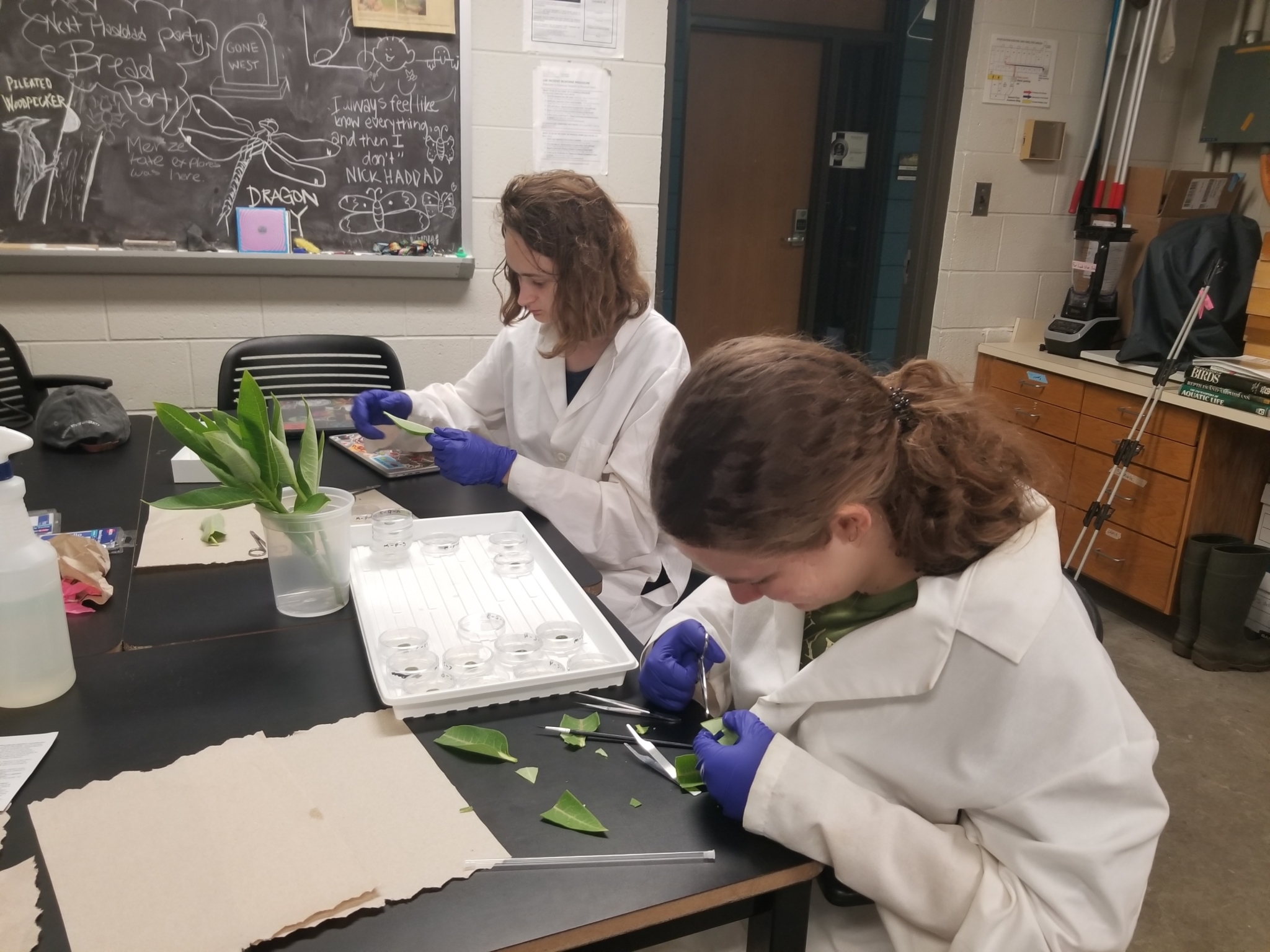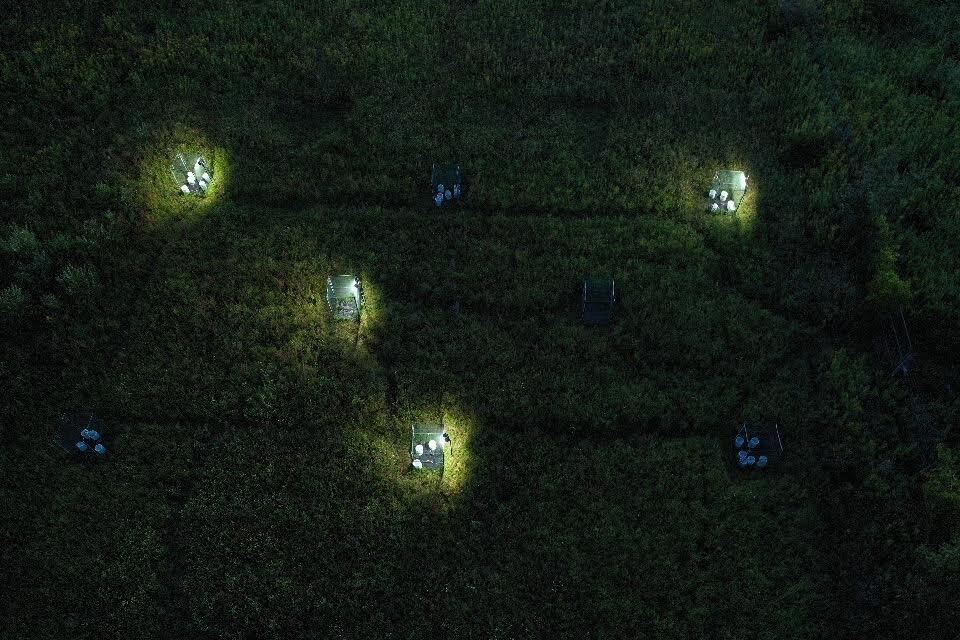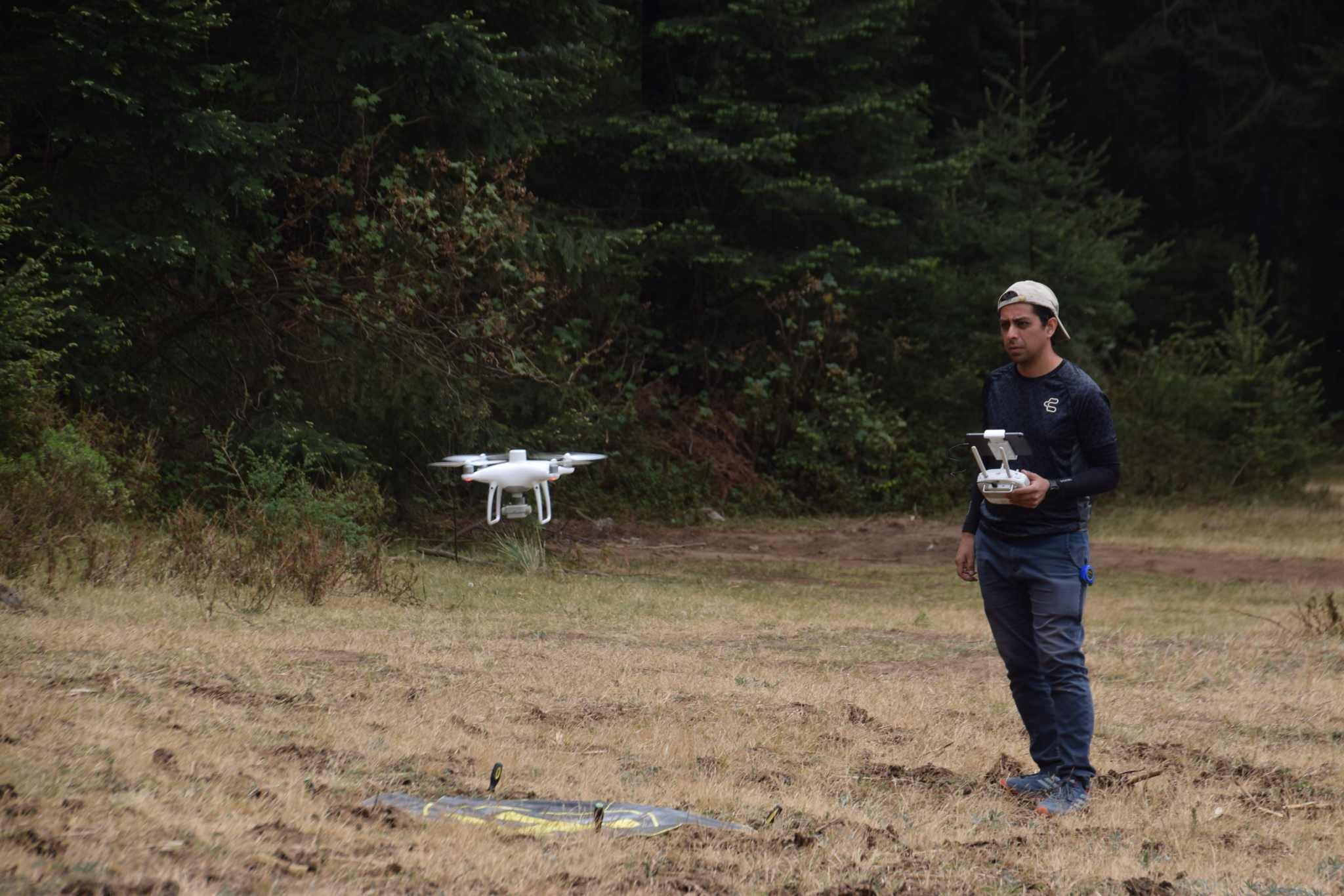Each year, MBF invites students (undergraduate and graduate) to apply for financial support from our Lincoln P. Brower Award program. It is always exciting to read applications and learn what students are currently researching. This year, MBF awarded grants to the three students, each of whom has provided an update on how their research is progressing.
Ashley Darst, PhD candidate, Michigan State University: Lethal and Sublethal Effects of Three Co-occurring Pesticides on Monarch Butterflies

This summer, I worked with two amazing students, Cooper Pryor and Megan Lamm, to administer pesticide doses in the diet of over 400 monarch caterpillars to investigate the lethal and sublethal effects of a combination of common pesticides. To feed these hungry caterpillars, we grew over 600 common pesticide-free milkweed plants from seed.
We measured how the pesticides affected larval survival, larval behavior, time to pupation, adult body size, mating success, female fecundity, and oxidative stress. I am also working with researcher Charlotte Wallsten to measure brain size. My next step is to analyze the data to create lethal dose curves, see how sublethal doses affected monarch butterfly performance, and test whether these pesticides acted synergistically in combination. Our results will help us understand how the increased use of pesticides may contribute to monarch and butterfly declines.
Hannah Gurholt, PhD candidate, Cornell University: Reproductive Diapause of the Monarch Butterfly Under Light-Polluted Skies

This summer, we conducted a third field season investigating the effect of artificial light at night (ALAN) on reproductive diapause in monarchs. Our previous two field seasons have shown a trend of monarch females reared under ALAN having more mature oocytes (i.e., not diapause) than those reared under moonlight. This year, we looked at whether the host plant affects sensitivity to ALAN.
We hypothesized that ALAN would delay diapause by acting as a false solar cue and thus affecting monarch development differently depending on their host plant, with increased sensitivity in those reared on tropical milkweed compared to common milkweed. Starting in July, we raised two cohorts of butterflies at a Cornell field site (top image). The butterflies were raised in the field from hatching until eclosion. After they eclosed, we moved them to a growth chamber, using Gatorade as an artificial nectar source. After seven days, we counted immature and mature oocytes in the females and measured the dry mass of the males’ ejaculatory ducts.
This field season had challenges, from storms to a few weeks of drought conditions, which led to a decreased sample size. However, there were also some great highlights. This was the first summer that we have been able to use offspring from a wild-caught monarch population (thanks to the Jaap de Roode lab) and dissect the ejaculatory duct from the males (thanks to the support from MBF’s Liz Goehring). This was also the first summer that I could take drone footage of my field sites (thanks to Katja Poveda).
We are now analyzing the reproductive diapause data and collecting wing color data from the individuals we dissected. This will allow us to look at the relationship between reproductive diapause and phenotypic traits that are known for migrant monarchs. We can’t wait to share our findings soon.
Erick Noé Huitrón Garcia, MS student, National Autonomous University of Mexico: Use of Drones for the Analysis of Forest Structure and Vigor in Monarch Butterfly Overwintering Sites

In the summer of 2025, with the support of the Monarch Butterfly Fund (MBF) and in collaboration with the Fondo de Conservación del Eje Neovolcánico (FOCEN), the Center for Environmental Geography Research (CIGA), and the University Drone Laboratory (LUD), we began our project to study forest structure and vigor in the monarch overwintering sites using drones.
We started by conducting drone flights equipped with multispectral, RGB, and LiDAR sensors in two monarch butterfly overwintering sites, from which we collected information to generate models of terrain, canopy height, and forest vigor.
With these data, we will characterize the overwintering sites into terrain units as the basis for spatial analysis. To do this, we have developed a terrain classification model from which we delimited approximately 70 analysis units in each overwintering site, allowing us to identify local terrain shape characteristics that could be associated with the microclimate.
Next steps involve describing the analysis units based on their forest structure and vigor characteristics, through which we expect to identify local patterns of the overwintering forest. Currently, we are developing the canopy height and forest vigor models. We have presented our work at the 20th State Congress on Science, Technology and Innovation and the 14th Meeting of Young Researchers of the State of Michoacán.




